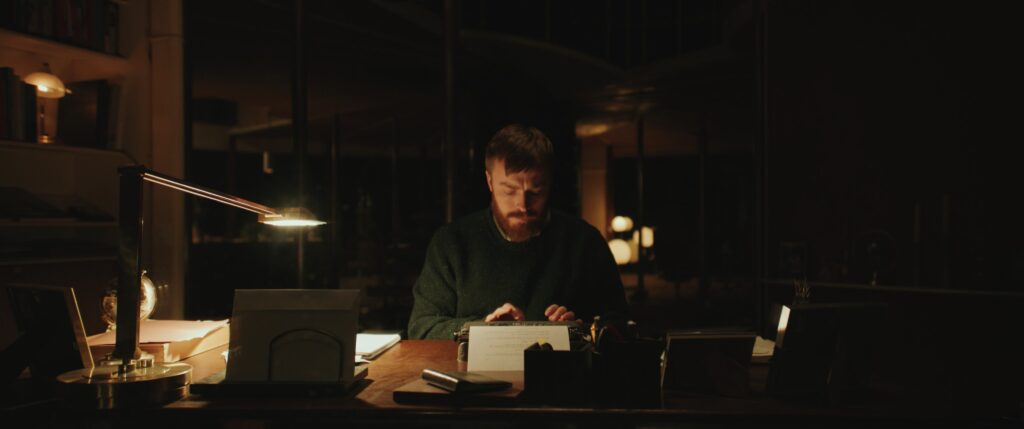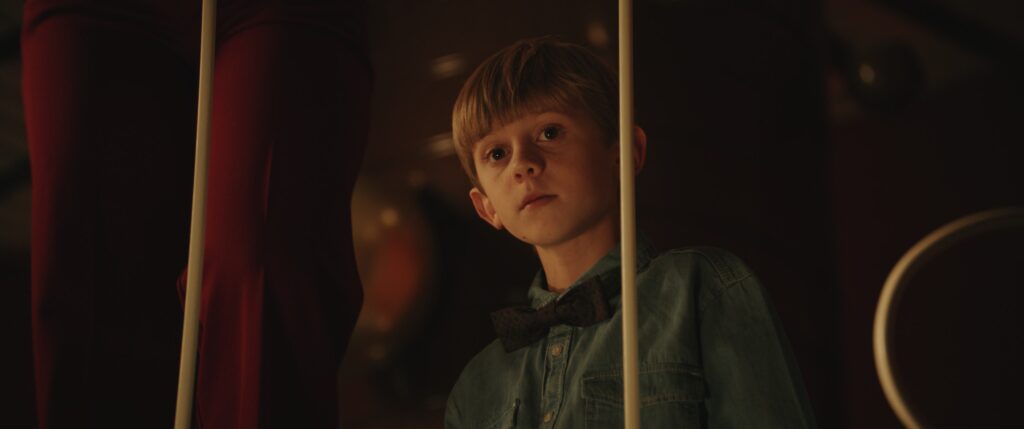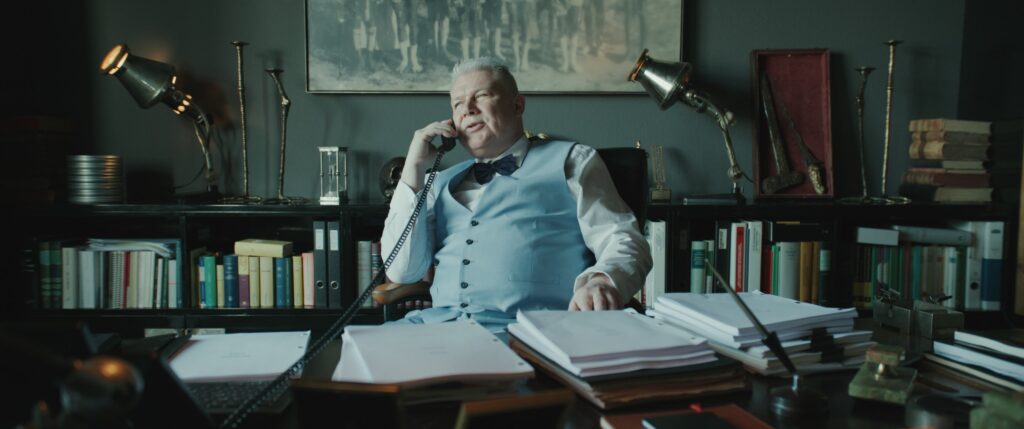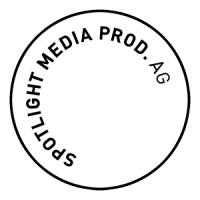THE SCREENPLAY
01

Development Process
We are aware that this project will immediately raise the question: How much influence did humans have in the creation of the screenplay? For this reason, we went to great lengths to document the development process of the script. You can read about it bellow and download the screenplay and the complete documentation under Downloads.

02
Why did it need human help at all?
The first question you might ask is: Why did it need human help at all? Couldn’t you have just asked ChatGPT “Write me a feature-length movie”? This is not possible at the moment because the current version of ChatGPT (even more so in the previous version we used) can only generate responses of limited characters. For this reason, we had to keep feeding ChatGPT with new input based on the answers it had previously generated itself.
Our first input (and only creative input as a screenwriters) was: “Write a plot to a feature length film where a screenwriter realizes he is less good than artificial intelligence in writing”. The answer is captured in the provided documentation under “Documentation & Downloads”. We then asked ChatGPT to generate characters for the story and give them names. Then we asked the bot to write a step-outline for the story and then each individual scene based on each story element provided. Because the script would have been too short, we asked three more times for a step outline, as well as for other possible scenes and twists for the story, which we then had written out by ChatGPT as well. This is how the entire screenplay was created.
03

Our Work
Our work consisted solely of selecting the scenes suggested by ChatGPT and shortening them. While this work clearly involves creative decisions, they are creative decisions which fall within the job of a film director or editor. If a director is involved during the development, he or she will ask the screenwriter which of various possible scenes should be included in the script. And as any filmmaker knows, scenes are regularly shortened and even rearranged during editing. However, we did not allow ourselves to mix or rearrange any dialogue or scenes in this case.
This work does not deserve a screenplay credit. Not by a long shot. Leading writer’s unions state that whoever provided the original idea for a movie must have written at least 30% of the script to receive a screenwriting credit. Even if our “selecting and shortening” had an influence on the screenplay and the directors personal taste was applied, this is still not worthy of a screenwriting credit. As mentioned, the entire plot, all the characters, every scene, all the storylines, all the twists, and all the dialog came exclusively from ChatGPT. Not a word in the script was written by anyone else. The correct attribution of ChatGPT as the sole screenwriter of the film should therefore not be under question – even by the toughest critic.
For lack of better options, we have taken a screenshot of each generated text from which the script was created. This shows the prompted text and the response generated by ChatGPT. In this way, anyone can read which prompt was used to create each scene and it is documented that only previous suggestions from ChatGPT were used. A screenshot could theoretically be manipulated. For this reason, the best proof is probably to feed ChatGPT the existing synopsis, the character list and then the same prompt. ChatGPT will write a comparable scene in terms of content and quality.
Do we think screenwriters should be replaced by artificial intelligence? Do we want our stories to be coming from computers rather than humans? Our personal view is very clear: Most certainly not! However, we also strongly believe that it is important for everybody to take a close look at what is possible at the moment. Only in this way can we hope to find the right way forward.
Peter Luisi & David Luisi



